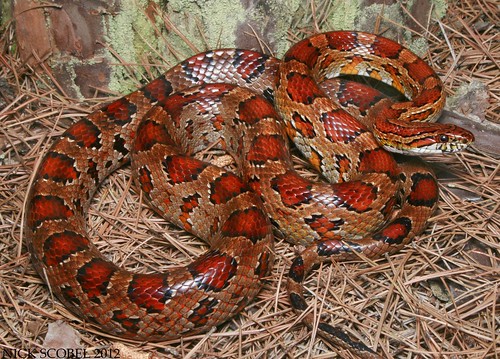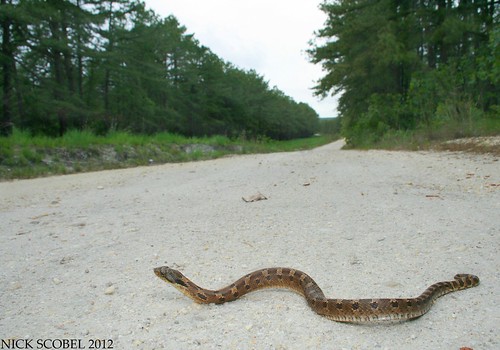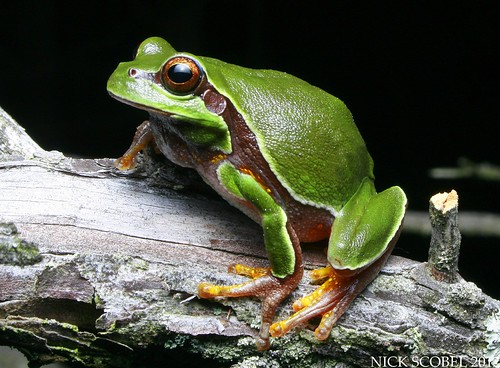Because of the long Memorial Day weekend, I had a chance to swing down to the pines for the first time of the summer in hopes of seeing some unique species. Peter Kleinhenz; a good friend from Ohio, pit stopped on his way from North Carolina up to New Hampshire for a day of herping. You can read his blog here; The Middle of Somewhere. We got started bright and early and walked some really nice habitat. After about a half our, we stumbled onto this stunning snake.
Corn snake! I spent time in the pine barrens all of last summer without seeing this species, and on the first trip down this summer got this large female laid out in the pine straw.
A beautiful textbook female, this snake was very large and noticeably gravid. The Red Rat Snake or Corn Snake is a common denizen of the coastal plain forests of the southeastern United States. Like other rat snakes, it is a predator of birds and mammals, and is a great ecological controller of rodents. This species reaches its northern range limit in the pine barrens and much of its habitat here has been developed. Because of its rarity in the area, corns from this locality are also highly sought after in the pet trade. These and other factors have reduced its numbers in Jersey and it is now listed as an Endangered species in the state. After a few shots, we parted ways. We decided to swing to some other areas and bumped into this snake crossing a a forest road.
The sandy soils of this pine barrens provide excellent habitat for this species, and its one I always enjoy seeing. This Eastern Hognose Snake was moving before a storm rolled in.
Eastern Hognose Snake - Heterodon platirhinos
This snake did the full display of hooding up and playing dead, but once I got the camera out all he would do was play dead, so I had to settled with this shot which I turned out well I think. There is an extreme abundance of the Fowler's Toad (Bufo fowleri) in the pine barrens, this coupled with the sandy habitats contributes to the abundance of this secretive species in the area. There were periodic thunderstorms for the rest of the afternoon and we spent our time traveling from site to site flipping cover. Although no coastals or pines were found, I did flip this cool little snake under a fallen billboard.
Eastern Worm Snake - Carphophis amoenus
A small fossorial species, worm snakes are often found under forms of cover including rocks, logs, and boards, especially those which are somewhat damp. Things were slow the remainder of the day, so we bided our time and waited for the sun to go down in hopes of finding one of the coolest species in North America, the Pine Barrens Treefrog. We arrived at a real nice bog surrounded by Atlantic White Cedar and were soon greeted with the distinct kwonk-kwonk-kwonk.
Pine Barrens Treefrogs - Hyla andersonii
This beautiful species is the true gem of the pine barrens and is only found here and a few scattered locations in the southeastern United States. The Pine Barrens Treefrog is a denizen of swamps and acid bogs that are scattered across the pinelands. It's difficult to understand as to why its distribution is so scattered and begs the question if they were once much more widespread in the eastern United States. It was a great way to end a fun day in the pines with Peter, I can only hope that in the coming weeks the pine barrens will produce a pine snake and kingsnake, only time will tell.









Couldn't of summed up our trip better if I tried (or taken pictures that remotely approach these). Thanks again for showing me around and I hope we can cross another state off the list soon!
ReplyDeleteWow! Thanks for posting. It's good to see what cool things you are finding this summer!
ReplyDeleteCindi